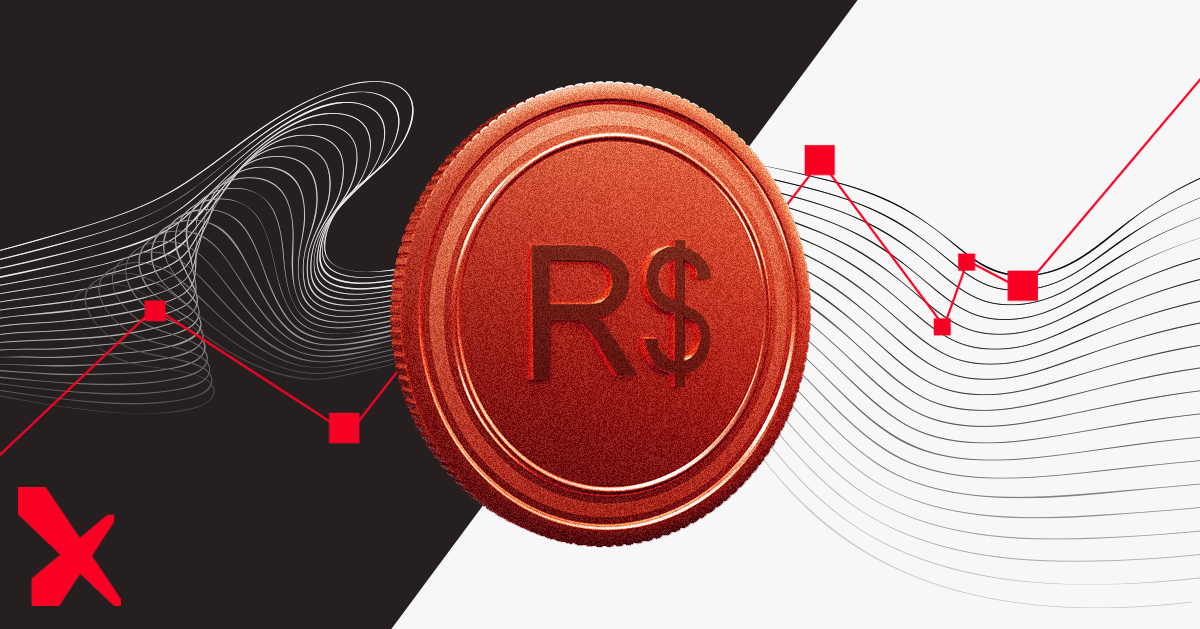Trading Signals 05/02 – 09/02
Brazilian Real (BRL): Importance and Economic Overview

What is the Brazilian Real (BRL)?
The BRL stands for the Brazilian Real, the official currency of Brazil. The Brazilian Real is subdivided into 100 centavos and is often denoted by the symbol R$. As of September 14, 2023, the exchange rate was approximately 4.95 BRL to 1 US dollar.
Main Points
- BRL stands for the Brazilian Real, Brazil’s official currency.
- One BRL consists of 100 centavos, often denoted by the R$ symbol.
- In 1994, the cruzeiro real was phased out, making way for the Brazilian Real at an exchange rate of 1 real for 2750 cruzeiro reais.
- To maintain economic stability, the BRL’s value was tied to the US dollar between 1994 and 1999.
- Due to global economic challenges, especially the Russian debt crisis, the COPOM decided to allow the BRL’s value to fluctuate to some extent against the US dollar.
Understanding the Brazilian Real (BRL)
The Brazilian Real, often shortened to “reais,” is managed by Brazil’s Central Bank’s Monetary Policy Committee, known as COPOM. This currency was launched in July 1994, replacing the cruzeiro real at a conversion rate of 1 real to 2750 cruzeiro reais, a move that was part of the “Real Plan.” At its inception, the real’s value was closely tied to the US dollar.
Brazil’s central bank has rolled out various special coins over the years. For instance, they commemorated the 2016 Summer Olympics with a 1 real coin and celebrated the 50th anniversary of the bank with another. Since 1995, they’ve introduced seven such unique coins. Today, there are coins ranging from 1 to 50 centavos in circulation, including a 1 real coin.
After its introduction, the real gained strength against the US dollar, reaching a rate of 1 BRL to 1.20 USD, thanks to Brazil’s booming economy attracting foreign investments. To maintain this rate, Brazil’s central bank intervened, linking the real’s value to the US dollar. But in 1998, the global financial landscape was shaken by Russia’s debt issues, impacting emerging economies like Brazil. This led to a decline in the real’s value as foreign investors pulled out. To address this, COPOM decided to let the BRL’s value fluctuate somewhat against the US dollar..
Brazil’s Economic Landscape
Brazil stands as one of the world’s most significant economies and the largest in Latin America. Its economic framework is marked by extensive and diverse production and trade activities. As of 2023, Brazil ranks 10th in terms of Gross Domestic Product (GDP), asserting its leadership in the region.
Agriculture’s Role in Brazil
Agriculture holds a pivotal position in Brazil’s economy. The nation ranks among the top global exporters of agricultural goods, including soybeans, coffee, sugarcane, beef, and poultry. Leveraging modern agro-technologies and vast fertile lands, Brazil maintains a high productivity level in this sector.
Industrial Prowess
Brazil’s industrial sector is both significant and varied. The country boasts a developed automotive industry, metallurgy, chemical sectors, petrochemicals, textiles, and food processing. Furthermore, Brazil stands as one of the leading producers and exporters of iron ore.
The Oil and Gas Sector
Brazil’s oil and gas sector has seen consistent growth, especially after the discovery of substantial pre-salt reserves in 2007. The Brazilian national oil company, Petrobras, plays a central role in this expanding domain.
Service Sector and Tourism
Brazil’s service industry holds a substantial share of its GDP, with tourism being a key contributor. Every year, countless visitors flock to Brazil, drawn by its scenic beaches, iconic events such as the Rio Carnival, and diverse natural wonders.
International Commerce
Brazil’s international trade activities are foundational to its economic structure. The nation stands out as a leading global exporter, especially in agricultural commodities, minerals, and vehicles. While China, the USA, and Argentina are Brazil’s main trading allies, there’s a growing emphasis on broadening trade connections with other parts of the world. By diversifying its trade partnerships, Brazil aims to enhance its economic trajectory and lessen its reliance on specific nations. In the coming years, Brazil foresees fortifying its global economic partnerships.
Additionally, Brazil’s involvement in the BRICS coalition offers it a strategic platform to foster international relationships and engage with other prominent emerging markets. Through BRICS, Brazil has found avenues for idea exchange, mutual issue coordination, and boosting trade and investments. Initiatives like the New BRICS Development Bank, which supports infrastructure and sustainable projects in member countries, have provided Brazil with added investment avenues.
Infrastructure Development
While Brazil’s infrastructure is on an upward trajectory, certain areas, particularly in the countryside, still face challenges. Urban hubs like São Paulo and Rio de Janeiro are equipped with comprehensive transportation systems, including roads, railways, and airports. Yet, Brazil’s more remote regions are in dire need of infrastructural advancements.
Conclusion
As one of the global economic powerhouses, Brazil showcases vast opportunities across various sectors, from farming to tourism. Yet, to sustain its growth trajectory and fortify its economic stance, Brazil needs to tackle pressing issues like social inequalities, infrastructure shortcomings, and environmental hurdles.
Oil: A Review of Early 2024
China’s Economy: Early 2024
Simple Strategy for Beginner Traders

